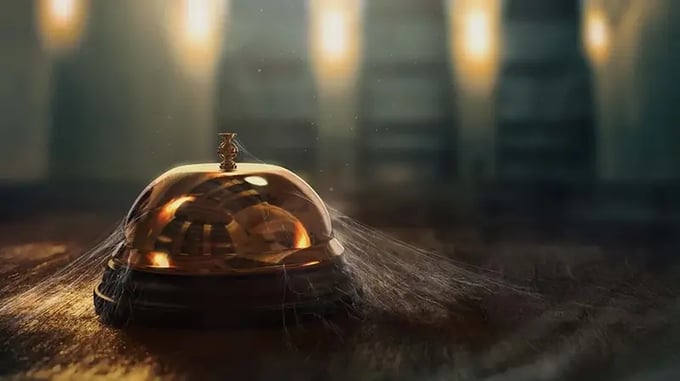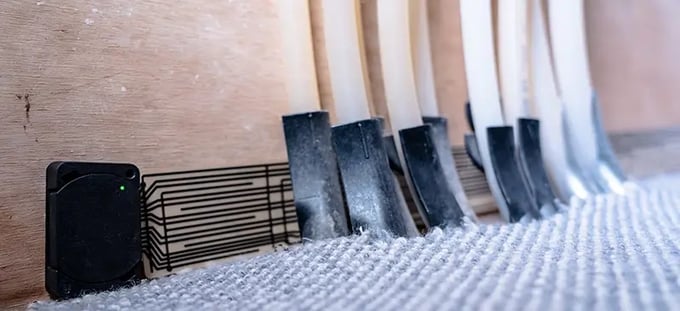Hotels are an well-established part of the global economy. Even after the impacts of the pandemic, there are more than 700,000 hotels and resorts worldwide comprise market worth US$800B. COVID-19 did hamper travel, but Mckinsey predict that there is an imminent “travel boom” and calls for the industry to invest in digital innovation to capture this post-pandemic growth.
One expensive area ready for optimization is hotel maintenance, which can account for 60% of a hotel's operating costs. Within maintenance, there is a major growing expense: hotel water leaks.
The cost of water damage paid out by US insurance companies is staggering at US$2.5B per year. As hotels have more bathrooms, commercial kitchens, and other plumbed-in appliances, this is a prime case for potential water leaks. The key to reducing these damages is early detection which points to the use of IoT monitoring devices.
Hotels are using IoT solutions for luggage management and employee dashboards. However, most hotel staff rely on manual inspection. In some cases, a complaint from a guest is the only way to identify a problem. This delay can allow for leaks to spread further damaging a customer’s experience.
Upcoming sensor technologies have demonstrated the value of IoT devices in detecting commercial water leaks. Early damage detection allows for proactive measures to be taken. There are still gaps that need to be addressed in scalability and discreteness. Our LoRaWAN® water leak detectors are ideal for hotel environments.

Why are hotels particularly prone to water leaks?
Major insurance firms report how escape of water (EOW) is the number one source of property claims for hotel owners - overtaking fire and burglary. Particularly in a hotel where it is estimated that around 150 gallons of freshwater is used per guest room a day, this only emphasizes the scale at which hotels use water.
More water utilities are expanding to include guest bathrooms, large commercial kitchens, swimming pools, and heating. This creates a complex network of pipes, with varying temperatures and pressures. This increases the likelihood of a leak.
Hotel architecture also unfortunately favors more leaks. Hotels with multiple stories often have bathrooms stacked in the same spot.
This creates a domino effect if there is a leak on the top floor. Water sources are pressurized more to reach higher floors. This can cause more wear and tear on the water network.
New construction methods, such as modular kitchen and bathroom units, and underfloor heating, can hide initial signs of leaks. These signs may only appear when there is serious damage. With some hotels starting back up again into full occupancy after the standstill of the pandemic, the downtime can cause pipes to corrode so when recommissioned, unexpected leaks can arise.
Water leaks damaging a hotel’s brand, not just its finances
The direct costs of wasting water can build up over time. For example, a leaking tap can increase water consumption by 5% and an eighth-inch pipe crack can cause 250 gallons of water waste per day. The statistics go on, but for hotels, the costs do not stop with the water.
This is shown in a major leak at a five-star resort in Las Vegas where water was pouring from a collapsed ceiling. This delayed a conference being held on the lower-floor convention center as well as disrupting the electric supply for the other customers staying in the 3,211-room hotel.
Sure, there was damage to the ceiling which can be fixed; however, those rooms could no longer be booked, losing the hotel key business. Furthermore, for all the disturbed occupants, the leak can delay their time and potentially damage their belongings. All these factors can ruin a guest's visit and a hotel’s reputation.

Surely insurance can help?
Many insurance providers deal with EOW as one of the most common claims in the residential sector as “financial cost is contained” and “under control”. Conversely in the commercial sector, insurance providers are not prepared for EOW claims due to the waterfall of secondary impacts that can cost over US$1.3M.
Consequently, insurance firms are more likely to offer specific EOW policies that cover only ‘trace and access’ for example. So while the costs for detecting and repairing the source of the damage is covered, replacing damaged drywall or treating mold is not.
Early water leak detection is critical
At the very least, regular inspections of leaks are necessary so defects can be resolved. For water leaks, critical areas should be checked at least twice a month. A manual inspection alone may not be sufficient for water leaks as water can travel a long distance before being detected. Recent IoT solutions have thus been developed to allow for automatic monitoring and notifications in hard-to-access areas.
There are three main categories of water leak sensors in the commercial setting: flood/spot sensors, flowmeter hubs and cable sensors.
Flood sensors are palm-sized pucks placed on flat surfaces near areas likely to leak. For this reason, they are the least popular as hotels have many potential critical areas of leaking and pucks cannot be conveniently placed everywhere. Sensing cables have the ability to cover large, flat areas like flat roofs or be wrapped around pipes to detect water, but these come at a higher price.
Finally, flowmeter hubs measure changes in flow rate and pressure in a pipe's network to deduce whether there is a leak. A stand-out feature for high-end flowmeters are their artificial intelligence capabilities which allow them to learn what the standard water flow is, so abnormalities are flagged early.

How can sensors be suited for the hotel?
As hotels get larger, it is clear that there are more opportunities for water leaks, highlighting the need for scalability. What we are seeing in the current water leak sensing market is that sensors are only being placed near critical areas which may create leak detection blind spots.
The next generation of solutions should thus look at targeted sensing- being able to pinpoint exactly where a leak is, whilst also being able to scale to larger and more complex buildings.
LAIIER has addressed these needs by developing water leak sensors with a thin, flexible form factor that can convert a range of areas into smart surfaces. The adaptability of this sensor means that it can be wrapped around pipes like cable sensors or trimmed to fit under tight plumbed in appliances. Another important factor for hotels is presentation, so thin stickers are much more favorable and can be hidden compared to pucks or cables.
Early detection is also very important, which is why LAIIER’s water leak sensors can be tuned to very high precision. For example, our water leak sensor can detect the first drops of water characteristic to hidden water leaks. Having this rich data set communicating the severity and locations of leaks is also so important for insurance companies who, at the moment, cannot offer policies due to the lack of data on risks.
Additionally, it is vital that there is not just the sensing device itself but also the surrounding system to process data and communicate with hotel management. LAIIER recognizes this through developing a LAIIER Cloud™ platform that allows seamless remote connectivity via LoRaWAN, communicating sensor measurements and statuses.
These LoRaWAN leak detectors are also an important link so maintenance can be synced with existing operations on a hotel’s property management system. Once hotels are less dependent on manual inspections, this will only decrease damage, downtime and mean better experiences for customers.

It's time for hotels to embrace IoT
We have explored multiple sources that emphasize how hotels need to keep one-step-ahead of water leaks in order to prevent regretful costs. Therefore, as the travel industry starts to open up, it is vital that hotels catch onto smart monitoring systems, just as other commercial properties have already done so. Flood, cable and flowmeter sensors have been evaluated here proving the drive for proactive detection. What is not seen is how these can possibly be scaled without compromising accuracy and cost.
LAIIER addresses these concerns with a discreet, scalable, and accurate LoRaWAN water leak detector. The supporting LAIIER Cloud™ platform then combines this sensing network so hotel operations can easily interpret valuable insights to resolve issues early. Digitizing common maintenance issues is key to the movement for smart hotels that value better guest experience, personalized services, and automation.